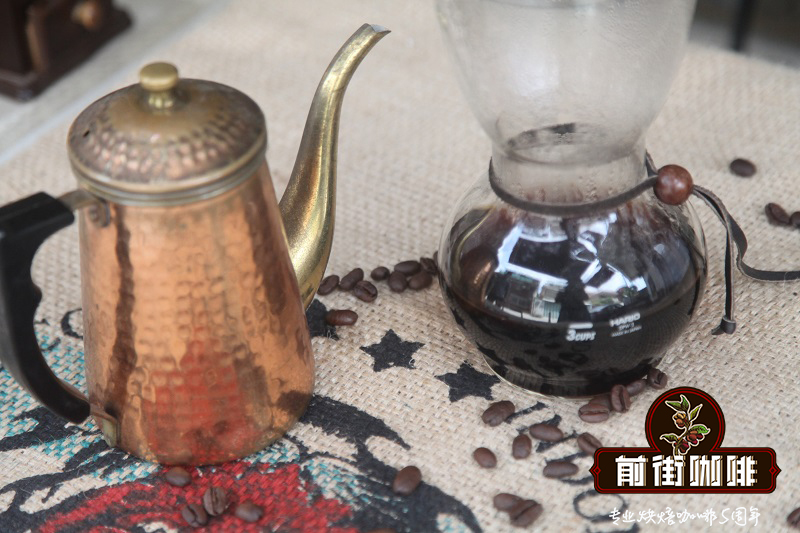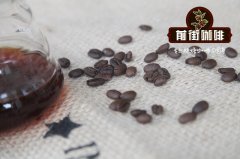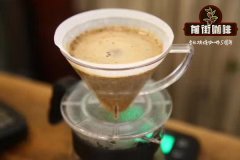What is organic coffee | is organic coffee safe? organic coffee tastes better | Peruvian coffee

Professional coffee knowledge exchange more coffee bean information please follow the coffee workshop (Wechat official account cafe_style)
Many things begin to be very popular as long as they are hung with the word organic. So what on earth is organic coffee? Will organic coffee be healthy?
In many parts of the world, growers use pesticides to control the growth of coffee pests, and moist and foggy coffee at high altitudes are more vulnerable to pests, so growers often use pesticides to treat them. Many people believe that coffee can be called organic coffee beans as long as synthetic pesticides, herbicides and chemical fertilizers are not used during the growth of coffee. In fact, organic coffee beans can be called organic coffee beans only if they have been certified by third parties (except coffee producers and buyers).
Organic coffee is coffee produced by organic farming. To understand organic coffee, one must first understand the concept of organic farming (organic farming), which originated in 1924.
In 1924, a group of farmers who were concerned about the future of agriculture turned to Dr. Rudolf Steiner, who was famous in Germany at that time. Steiner subsequently issued a series of lectures on the ecology and sustainability of agriculture (ecological and sustainable approach to agriculture), advocating the use of chemical fertilizers and pesticides to increase soil fertility and produce health products. His main concept is
The cultivation of crops should not pollute the environment, do not destroy the ecology, and can provide consumers with healthy and safe products.
According to this concept, all chemicals used in organic farming, including fertilizers and insecticides, should all come from nature, not from laboratories or factories. For example, as a nitrogen fertilizer, nitrates from natural mines are considered organic, while nitrates produced by chemical plants are not.
However, in the 1924's, the trend of agricultural development around the world was to pursue industrialization and commercialization, giving priority to increasing production, so the concept of organic farming was not taken seriously. It was not until 1940 that the efforts of J.I.Rodale, through American playwrights and publishers, gradually became known to the world, but it was still a long way from "universal recognition", for an important reason, because it was in 1940 that the Green Revolution (green revolution) set off a wave, with farmers using fertilizers and pesticides in large quantities to expand production; and the emergence of "strange wheat" and "kiwi rice" [Note 1] pushed the tide to its peak. In the 1970s, the tide finally brought coffee into it.
Anyone who knows a little about coffee knows that although coffee trees are tropical plants, whether they are Arabica or Robusta, they grow in the shade of tall trees in their native environment, because coffee trees do not need or tolerate too much sunlight. Botanists have found that the best ratio of sunlight needed for photosynthesis of coffee trees in the equatorial region is only 20% to 25%. Beyond this ratio, the upper leaves will no longer be absorbed, but the sunlight will pass through and be absorbed by the lower leaves. These extra sunlight can indeed promote flower buds and produce more fruit. At the height of the Green Revolution in the 1970s, scientists developed the all-day planting (sun-grown) technology of coffee trees, which allowed coffee trees to grow without shade trees. Many coffee farmers were encouraged to cut down shade trees and grow only coffee as a single crop, not only expanding the acreage, but also increasing the production of each tree. The accompanying problems, such as insufficient soil fertilizer and increased insect pests, are solved by spraying large amounts of fertilizers and pesticides.
However, the production of coffee has increased, but it has paid a very heavy price: the earth's ecosystem has been affected, natural resources have been gradually exhausted due to overuse, the quality of coffee has begun to decline, and, farmers are restricted by the prices of chemical products and are unable to resist [Note 3]. These consequences emerged one by one after the outbreak of the energy crisis.
The first energy crisis occurred in 1973. Since then, people have begun to realize that all kinds of resources on the earth are limited. In agriculture, once the environment is polluted, not only the ecology will be destroyed, but also the productivity will decline. How to maintain environmental quality and living standards, while ensuring sustainable development, has become an important issue for mankind. As a result, many countries first formulated laws and regulations on organic agriculture and implemented a "certification" system, and agriculture began to move forward in an organic and sustainable direction. Coffee, as an important part of agriculture and an internationally traded commodity, of course, cannot stay out of the trend.
After the 1970s, the momentum of the Green Revolution waned, and many coffee farmers returned to the ancient way: planting coffee trees under shade trees, replacing some or all of their chemical synthetic fertilizers with organic fertilizers, preparing natural pesticide sprays or making traps for trapping pests. Cultivate natural enemies that can control diseases and insect pests, and so on.
However, it is not easy to comply with all the rules of organic coffee. In addition to the increase in labor costs, the production of coffee is also much lower than that of "non-organic" coffee using chemical fertilizers and pesticides. Although the price of coffee can be increased due to the improvement of flavor, the increase may not necessarily compensate for the loss. At this point, the organic certification system shows its effectiveness, because once the word "organic" is hung up, some people will naturally be willing to pay more for it.
Peru began exporting coffee in 1887 and is now the eighth largest producer and the world's largest exporter of organic coffee, with an annual volume of 2 million bags, accounting for 5 per cent of total exports. More than 1/3 of the country's coffee is grown in the Cajamarca region in the north and Aprimark and Cusco in the south. The farms are mainly run by small farmers with an average size of no more than 5 hectares. The most common varieties are bourbon, Tibica, Pash and Kaddura.
Coffee can be grown up to 2200 meters and has many unique microclimates. Many coffees are collected and processed and sold through cooperatives, which is now the mainstream of boutique coffee. In the past 10 years, the EL GUABO Guawu community has improved the development of small batches of coffee beans on an organic basis, and often holds competitions to reward and certify growers.
END
Important Notice :
前街咖啡 FrontStreet Coffee has moved to new addredd:
FrontStreet Coffee Address: 315,Donghua East Road,GuangZhou
Tel:020 38364473
- Prev

Is there any boutique coffee in Indonesia? is coffee manning good? how to make coffee manning?
For more information on coffee beans, please follow the coffee workshop (Wechat official account cafe_style) Manning Coffee is produced in Sumatra, Indonesia, Asia, also known as Sumatran Coffee. The main producing areas are Java, Sulawesi and Sumatra, 90% of which are Robusta species. Among them, the "Mantelin" produced in Sumatra is the most famous. Produced in
- Next

The basic characteristics of bourbon Coffee how to drink Yellow bourbon Coffee beans
Professional coffee knowledge exchange more coffee bean information Please follow the coffee workshop (Wechat official account cafe_style) Yellow bourbon is a unique bourbon variety in the Brazilian state of Sao Paulo, mainly because the ripening consequence does not turn red, but appears orange, so it is called "yellow bourbon". If Huang Bobang is planted at a high altitude, it will have a great flavor and has been rolled for two years in a row.
Related
- Detailed explanation of Jadeite planting Land in Panamanian Jadeite Manor introduction to the grading system of Jadeite competitive bidding, Red bid, Green bid and Rose Summer
- Story of Coffee planting in Brenka region of Costa Rica Stonehenge Manor anaerobic heavy honey treatment of flavor mouth
- What's on the barrel of Blue Mountain Coffee beans?
- Can American coffee also pull flowers? How to use hot American style to pull out a good-looking pattern?
- Can you make a cold extract with coffee beans? What is the right proportion for cold-extracted coffee formula?
- Indonesian PWN Gold Mandrine Coffee Origin Features Flavor How to Chong? Mandolin coffee is American.
- A brief introduction to the flavor characteristics of Brazilian yellow bourbon coffee beans
- What is the effect of different water quality on the flavor of cold-extracted coffee? What kind of water is best for brewing coffee?
- Why do you think of Rose Summer whenever you mention Panamanian coffee?
- Introduction to the characteristics of authentic blue mountain coffee bean producing areas? What is the CIB Coffee Authority in Jamaica?

